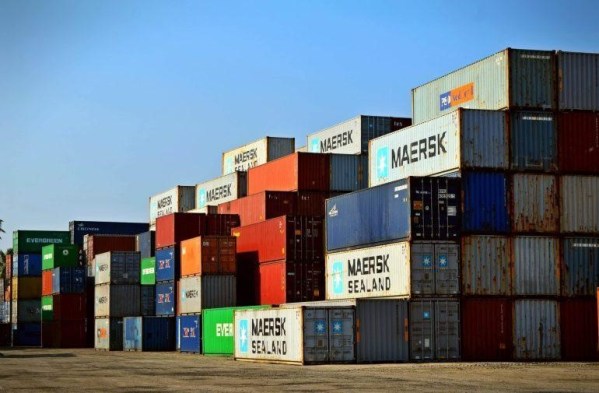Reducing Carbon Footprints: How Logistics Can Support Green Building Initiatives
The construction industry, known for its significant environmental impact, has embraced green building initiatives to create sustainable structures to contribute to the fight against climate change. However, one often overlooked but critical aspect is the logistics that support these initiatives. Efficient logistics can significantly reduce carbon emissions, ensuring the green building movement achieves its environmental goals. This article explores how logistics can support green building initiatives and reduce carbon footprints.
Understanding Green Building Initiatives
Green building initiatives focus on creating environmentally responsible and resource-efficient structures throughout a building’s life cycle. This encompasses everything from the design, construction, operation, maintenance, renovation, and eventual demolition. The core principles include:
- Sustainable Site Selection and Design: Selecting locations that reduce environmental impact and create buildings that optimize natural light and energy efficiency.
- Energy Efficiency: Incorporating renewable energy sources and energy-efficient systems.
- Water Efficiency: Utilizing water-saving fixtures and systems to reduce consumption.
- Material Selection: Using sustainable, recycled, and locally sourced materials.
- Indoor Environmental Quality: Ensuring good air quality and natural light to enhance occupant health and productivity.
The Role of Logistics in Green Building
Logistics, the detailed coordination of complex operations involving people, facilities, and supplies, is integral to the success of green building initiatives. Here’s how logistics can support and enhance green building initiatives:
1. Optimized Transportation Routes
Efficient route planning can drastically reduce fuel consumption and emissions. By using advanced logistics software, companies can optimize transportation routes, ensuring that materials and equipment are delivered using the shortest and most efficient paths.
2. Consolidated Shipments
Combining multiple shipments into a single delivery can significantly reduce the number of trips needed. This strategy, known as shipment consolidation, minimizes the fuel used and decreases greenhouse gas emissions. For green building projects, where timing and scheduling are crucial, logistics can ensure that materials arrive just in time, reducing the need for storage and the associated costs.
3. Eco-friendly Transportation Options
Investing in eco-friendly transportation options such as electric or hybrid vehicles can further reduce the carbon footprint. Logistics providers that prioritize sustainable practices can contribute to the overall greening of the construction industry. Additionally, the use of rail or water transport, which have lower emissions compared to road transport, can be considered for long-distance deliveries.
4. Efficient Inventory Management
Proper inventory management reduces waste and ensures that only the necessary amount of materials is ordered and delivered. Logistics systems can track inventory in real-time, preventing over-ordering and reducing the need for last-minute, less efficient deliveries. This also minimizes the waste of perishable or time-sensitive materials.
5. Sourcing Local Materials
Sourcing materials locally significantly reduces the carbon emissions associated with transportation. Logistics plays a crucial role in identifying and managing local suppliers, ensuring that green building projects use materials that are not only sustainable but also have a smaller transportation footprint.
Case Studies: Successful Integration of Logistics in Green Building
- The Bullitt Center, Seattle: Often referred to as the greenest commercial building in the world, it is a prime example of how logistics can be modeled to support the development of environmentally conscious properties. The project prioritized local sourcing of materials, reducing transportation emissions. The logistics team meticulously planned deliveries to ensure materials arrived just in time, minimizing storage needs and site congestion.
- One Central Park, Sydney: One Central Park in Sydney incorporates a vertical garden and other sustainable features. The logistics for this project involved careful coordination of deliveries to reduce emissions. The use of local materials and consolidation of shipments played a significant role in minimizing the project’s carbon footprint.
Future Trends in Logistics and Green Building
The future of logistics in green building initiatives looks promising, with several trends set to revolutionize the industry:
- Smart Logistics: The integration of IoT (Internet of Things) and AI (Artificial Intelligence) in logistics can enhance efficiency. Smart sensors and AI algorithms can optimize routes in real time, predict and prevent delays, and reduce energy consumption.
- Sustainable Packaging: Reducing the environmental impact of packaging is another critical area. The adoption of sustainable, recyclable, or biodegradable packaging materials can significantly reduce waste and carbon emissions.
- Renewable Energy-Powered Warehouses: Warehouses powered by renewable energy sources such as solar or wind can further reduce the carbon footprint of logistics operations. These green warehouses can also incorporate energy-efficient technologies to reduce overall energy consumption.
Conclusion
The synergy between logistics and green building initiatives is crucial in the global effort to reduce carbon footprints. Efficient logistics supports the timely and cost-effective completion of green building projects and plays a significant role in minimizing their environmental impact.
Embracing these strategies to reduce carbon footprints will ensure that the green building movement not only creates sustainable structures but also fosters a more sustainable future. As technology advances and sustainable practices become more integrated, the logistics sector will continue to be a key player in achieving the goals of green building initiatives.
Author Bio
Edrian is a college instructor turned wordsmith, with a passion for both teaching and writing. With years of experience in higher education, he brings a unique perspective to his writing, crafting engaging and informative content on a variety of topics. Now, he’s excited to explore his creative side and pursue content writing as a hobby.





Leave a Reply